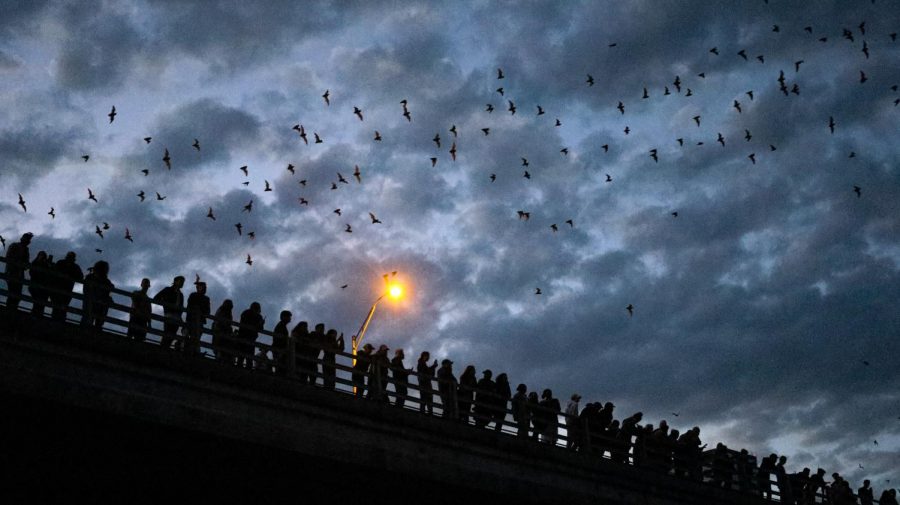Austin may hire full-time bat scientist to protect, manage local colony
April 5, 2023
Austin’s famous bat population — the world’s largest urban bat colony — faces threats from potential displacement and disease. To protect the critters, the Animal Advisory Commission unanimously voted last month to recommend the City Council to hire a full-time bat biologist, also called a chiropterologist, to help promote conservation and make Austin more habitable for the bats.
According to the recommendation, the chiropterologist would work in the Wildlands Conservation Division of the Austin Water Utility and would protect the population of about 1.5 million bats from disease, impacts of climate change and harm from construction and development.
“Our hope is that Austin in the future will be a green city that embraces bats,” said Lee Mackenzie, co-founder and programs manager of the Austin Bat Refuge.
Austin’s urban bats reside under the Ann Richards Congress Avenue Bridge and are often a token of pride to locals.
Mackenzie said there are not many local experts who work with the bats, so the Austin Bat Refuge carries a lot of the responsibility for rehabilitating sick bats and educating the public about living harmoniously with them.
Responsibilities for the recommended chiropterologist would include improving natural habitats, advising infrastructure decisions and educating about proper human and bat interaction.
“There’s all kinds of misinformation that has been communicated for decades, and centuries, really,” Dianne Odegard, co-founder and executive director of Austin Bat Refuge, said. “As long as you don’t try to grab a bat or stick your finger in its mouth, it’s not going to bite you and is very unlikely to cause any problems for you.”
In addition to facing potential noise and air pollution, Austin’s bats are threatened by white-nose syndrome, a fungal disease that is especially fatal for bats hibernating in caves, according to Texas Parks and Wildlife.
Jeffrey Chuong, a biology and biomedical engineering sophomore, researched the disease with a team of other undergraduate students last year. Hiring a chiropterologist could help the city better understand how to protect bats from white-nose syndrome, Chuong said.
“They contribute a ton to the economy, the ecosystem with biodiversity and helping crops grow (by) killing pathogens,” Chuong said.
Once the chair of the commission files a report, the City Council can add the recommendation to its agenda for approval.
Odegard and Mackenzie said it would be unfortunate for Austin’s economy to lose a large portion of Austin’s bat population because they bring in millions of dollars of tourist revenue. Additionally, the pair said they hope the recommended chiropterologist would help the public better understand that it is possible to safely and peacefully coexist with bats.
“The Congress Avenue Bridge colony is a great economic engine, but it’s also a shining example to the rest of the world how to coexist with nature,” Mackenzie said. “It’s such a treasure to have a great natural wonder right in the heart of Austin.”



